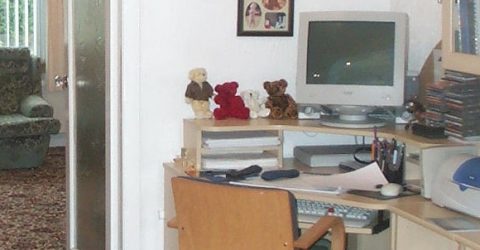The growth of dial-up nostalgia
Twenty-five years has elapsed since the internet went mainstream, and dial-up nostalgia is taking hold among those who remember it

Nostalgia is a curious beast.
Things which once seemed mundane or unremarkable slowly gain a soft-focus sheen, while frustrations gradually give way to affection in our memories.
Given the rapid pace of evolution, computing often evokes pangs of nostalgia as we remember elements of a bygone age with a fondness they perhaps don’t deserve.
The Sinclair Spectrum’s sweat-inducing rubber keys and ear-piercing cassette loading screeches are classic examples.
Indeed, sounds can be extremely evocative. Consider the noise of a dial-up modem connecting to the internet.
One YouTube clip of dial-up sounds has been seen eleven million times, while another has been looped to make a frankly unnecessary ten-hour soundtrack.
(It’s had significantly less views.)
Even so, the existence of these clips reflects growing fondness for the age of AOL chimes, Freeserve email addresses, MySpace pages and Napster accounts.
Off the dial
It’s perhaps unsurprising that dial-up nostalgia is so keenly felt among people who were there as it all happened.
MoreWhat’s the difference between broadband and dial-up internet
The late 1990s were a febrile time of unlimited possibilities. It was suddenly possible to communicate and consume in unprecedented ways, as the world shrank around us.
You could make friends without leaving your bedroom. You could find love without having to go to the office Christmas party. You could shop – and boy, did we shop.
Like a first love, those giddy years of internet discovery left indelible impressions. Little wonder that even the names of ISPs can trigger longing for a simpler, slower age.
And it really was slower.
An inconvenient truth which tends to get forgotten amid dial-up nostalgia is how long everything took.
Content downloaded at speeds of a few kilobytes per second, whereas we now expect connection speeds of megabytes per second – a thousand times faster.
Even viewing webpages could be tortuous, with text and banners slowly unfurling before each image laboriously downloaded and displayed.
The less said about peer-to-peer file sharing through a 56K modem, the better.
A basic Flash animation could paralyse your computer for several minutes, which was especially frustrating if it turned out to be a landing page.
This, after all, was a time before SEO. Websites were basic, inefficient and frequently garish, peppered with flashing messages and the dreaded Comic Sans font.
Yet that tends to be forgotten as we remember illicit IM chats with friends’ partners, or the thrill of finding an obscure B-side on a P2P platform.
And to some extent, dial-up nostalgia is justified because the internet was a nicer place back then.
Social media’s airbrushed perfection and endless trolling remained niche. Fake news didn’t register. Even malware and viruses were comparatively few and far between.
The internet was exciting, futuristic and frustrating in equal measure – especially when it tied up the house phone line.
It’s come a long way in terms of aesthetics, versatility and reliability. And in some respects, that’s a good thing.
In other ways, we’ve definitely gone backwards since the days of dial-up.
However, fibre broadband is here to stay, and it’s only getting faster.






